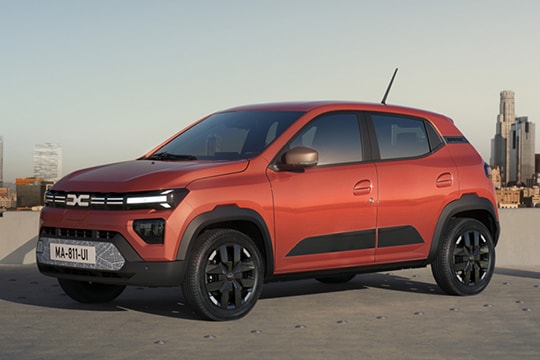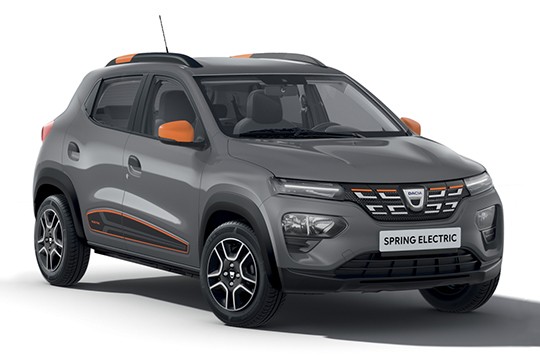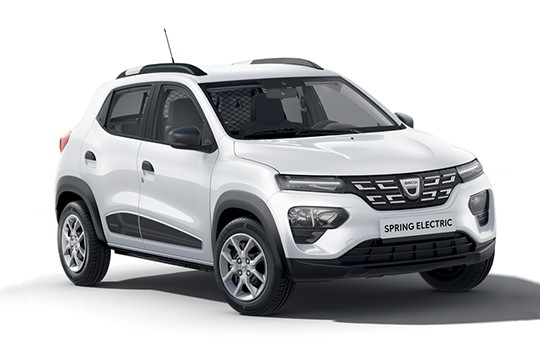DACIA Spring Models/Series Timeline, Specifications & Photos
First production year: 2021
Engines: Electric
Body style: SUV (Sports Utility Vehicle)
The Romanian automaker Dacia added a second refresh for its first-ever fully electric vehicle in 2024, and exterior and interior changes applied to the car were massive.
Dacia unveiled the first generation of the Spring in March 2020 in an online event due to the cancellation of the Geneva Motor Show. It was the year of the pandemic that locked everybody home. Despite the challenging situation, the sales moved on, and in 2021, the Romanian automaker released its first facelift. It was significant, with several upgrades on the exterior and on the drivetrain. The second refresh came in 2024, almost three years after the model’s introduction. This time, changes were so significant that it could pass as a new model but with the same drivetrain. The automaker improved everything it could, from tip to toe, inside and outside.
At the front, the Spring featured a new fascia that resembled the one from its bigger brother, the crossover Duster. Its daytime running lights were placed in an upper position, while the headlights were integrated below them in the bumper. Its logo took center stage between two sets of twin horizontal slats, while on the lower side of the bumper, the automaker added a broad, shield-like plastic trim.
From its profile, the 2024 Spring kept its small-sized crossover stance on its tiny steel wheels with plastic caps. An additional plastic trim adorned the lower side of the doors as protection against shopping cart bumps. Dacia offered the Spring in three grades: Essential, Expression, and Extreme. In its top-spec configuration, it featured contrasting colors for the door mirrors and black exterior moldings, including the ones that decorated the wheels’ arches. At the back, the automaker added the brand’s signature lighting Y-shaped taillights.
Inside, the automaker installed a seven-inch display into the instrument cluster. It could be connected via USB and Bluetooth to a smartphone in the absence of an infotainment system. Atop the center stack, Dacia installed a special cradle for mobile phones, while a ten-inch touchscreen infotainment unit was available for the Extreme grade. On the center console, the automaker installed the gear selector, which was like a switch instead of a rotary knob as on its predecessor. The quality of the materials improved, and customers could even get the car with artificial leather upholstery. Despite its small size, the Spring could accommodate up to four passengers, although not for long distances.
Along with the 2024 refresh, the Spring got a V2L system that could provide up to 3.6 kW of power via its front-mounted charging port. The automaker made the car with small-sized batteries that could be charged from regular home outlets with up to 11 kW. In addition, a 30 kW DC charging was available. The Spring was provided with a choice of two electric motors but just one battery pack of 26.8 kWh.
The Dacia Spring electric version was released in 2020 and was the smallest car Dacia ever made.
The small Spring had room for 4 people only and was designed for urban traffic, thus the load area was a decent 300L.
The exterior design of the Spring was pretty much the Renault Kwid’s, with narrow headlamps, a big grille with chrome accents and the Dacia logo. From the back, the Spring was similar to the Dacia’s Sandero released in the same year, with a redesigned rear bumper.
The Spring had an electric engine that developed 45 hp paired with a 26.8 kW battery.
The autonomy was estimated at around 220 km and possibly 295 km in urban traffic with constant speed and weather conditions close to ideal. The battery could be charged at 220V.
Inside the Spring we could find a simple, well-put together cabin, the interior design not being very different from the Sandero’s older versions.
The users could connect their mobile devices through either Apple CarPlay or Android Auto, using the Dacia’s media-nav system, however, it was not a standard option.
Dacia also released a mobile application called “My Dacia”, through which users could see the battery percentage left, the car’s location, the ETA for charging and could turn on the climate control.
The small vehicle had a warranty of 3 years or 100.000 km and Dacia also provided customers with an 8 year warranty for the battery.
The Dacia Spring was expected to be a hit as it was a budget car that offered great advantages.
The Dacia Spring electric version was released in 2020 and was the smallest car Dacia ever made.
For the cargo version of the mini SUV, Dacia decided to remove the rear bench, thus increasing the load area from 300 L to 800 L.
The exterior design of the Spring was pretty much the Renault Kwid’s, with narrow headlamps, a big grille with chrome accents and the Dacia logo. From the back, the Spring was similar to the Dacia’s Sandero released in the same year, with a redesigned rear bumper.
The only exterior paint color for the cargo version was white.
The standard features included air conditioning, bluetooth connection and an USB port, 14-inch wheels and black exterior door handles and rear mirrors. A spare tire was not available for the model, Dacia deciding to use the space for cargo.
The Spring had an electric engine that developed 45 hp paired with a 26.8 kW battery.
The autonomy was estimated at around 220 km and possibly 295 km in urban traffic with constant speed and weather conditions close to ideal.
Inside the Spring we could find a simple, well-put together cabin, the interior design not being very different from the Sandero’s older versions.
The users could connect their mobile devices through either Apple CarPlay or Android Auto, using the Dacia’s media-nav system.
Dacia also released a mobile application called “My Dacia”, through which users could see the battery percentage left, the car’s location, the ETA for charging and could turn on the climate control.
The small vehicle had a warranty of 3 years or 100.000 km and Dacia also provided customers with an 8 year warranty for the battery.
The Dacia Spring was expected to be a hit as it was a budget car that offered great advantages.


